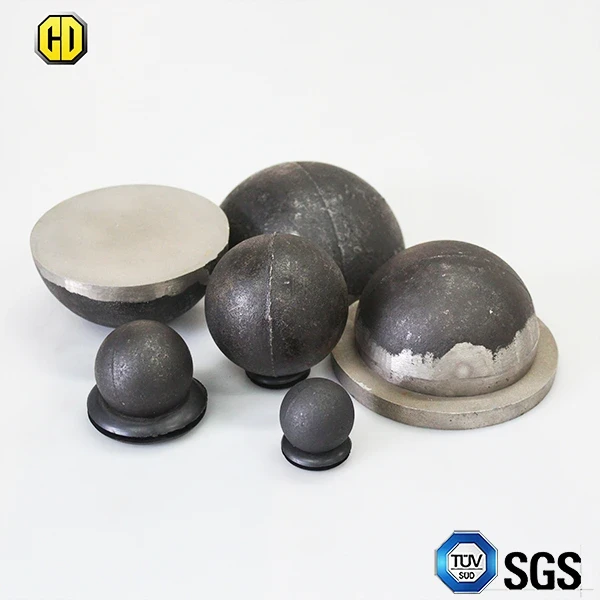Oct . 20, 2025 13:55 Back to list
Low Chrome Grinding Media: Durable, Cost-Efficient, Low Wear
What plants really want from low chrome grinding media (and why medium chrome is having a moment)
If you spend enough nights around mills—and I have, coffee in one hand, wear logs in the other—you learn what matters. Cost per ton. Stable hardness. Fewer changeouts. That’s why low chrome grinding media still dominates in cement and some iron ore circuits. And lately, a lot of buyers tell me they’re nudging into “medium chrome” to squeeze extra life without blowing up the budget.

Industry snapshot
Cement and mining are cautious adopters. To be honest, they like proven recipes. In 2024–2025 the trend I keep hearing is “step-up alloys”: moving from low chrome grinding media to 7–10% Cr for a modest premium and 10–30% longer runs in abrasive feeds. It’s not flashy, just practical.
Product focus: Medium chrome grinding ball (7–10% Cr)
Origin: KIZUN Industry Zone, Luquan, Sihijiazhuang city, Hebei, China. Casting route, black finish, sizes from 10–140 mm. I’ve seen these run steadily in cement finish mills and magnesite.
| Parameter | Typical value (≈, real-world may vary) |
|---|---|
| Chrome content | 7–10% Cr |
| Carbon / Alloy | C ≈ 2.2–2.8%; Mn/Si micro-alloyed |
| Hardness (surface/core) | HRC 54–60 / 50–56 (ASTM E18 / ISO 6508-1) |
| Sizes | 10–140 mm (dia tolerance per ISO 3290 reference) |
| Wear rate (cement clinker) | ≈ 50–90 g/ton |
| Service life | Up to 1.2–1.4× vs typical low chrome grinding media in similar mills |
Where they’re used (and why)
- Cement plants (raw and finish grinding) – fewer top-ups, consistent Blaine.
- Mining mills (iron ore, phosphate) – balanced toughness to resist spalling.
- Chemical, petroleum, refractory material lines – steady hardness across lots.
Many customers say they see more predictable power draw and less noise—small things, but they add up.
Process flow (what I look for in a good ball)
Charge selection → Induction melting with spectro control → Automatic sand casting → Quench + temper (controlled cooling curve) → Stress relief → Shot blasting → Sorting by diameter → Hardness mapping (E18/6508-1) → Drop test (ISO 148-1 method guidance) → Batch traceability (heat no.).
Vendor comparison (field-notes)
| Factor | Integrated foundry | Trading brand | This product |
|---|---|---|---|
| Chrome range | 5–12% Cr | Varies | 7–10% Cr |
| Heat treatment control | Good | Mixed | Documented curves |
| Certifications | ISO 9001 | Claims only | ISO 9001; GB/T 17445 compliance |
| Lead time | ≈ 3–5 weeks | Uncertain | ≈ 3–4 weeks (in season) |
Customization
Sizes 10–140 mm, tailored hardness profiles for first vs second chamber, logo-stamped balls, 1-ton jumbo bags or 25 kg sacks. For highly abrasive ore, I’d ask for the upper Cr band and slightly deeper quench—simple tweak, meaningful result.
Case note (real plant, quick math)
Northern cement mill, 3.2×13 m ball mill: switching from low chrome grinding media to 7–10% Cr cut makeup by ≈12% and extended changeout by ~9 days per cycle. Energy per ton didn’t spike; Blaine stayed within spec. Honestly, that’s the kind of result ops managers quietly love.
Testing and standards I care about
- Hardness: ASTM E18 / ISO 6508-1
- Chemical analysis: spectrometer certificate per heat
- Impact: ISO 148-1 method guidance for drop testing
- Material class: ASTM A532 reference; GB/T 17445 (Cast grinding balls); regional GOST 7524 for CIS buyers
References:
[1] ASTM E18 – Standard Test Methods for Rockwell Hardness of Metallic Materials
[2] ISO 6508-1: Metallic materials — Rockwell hardness test — Part 1
[3] GB/T 17445: Cast grinding balls (China National Standard)
[4] ASTM A532/A532M: Abrasion-Resistant White Iron Castings
[5] GOST 7524-2015: Grinding media. Technical specifications
-
Expert Insights on Fabrica de Molinos de Bolas: Industry Trends & Global Applications
NewsNov.24,2025
-
Expert Insights on Fabricantes de Bolas de Molienda de Acero: Global Applications & Trends
NewsNov.23,2025
-
Leading Fabricantes de Bolas de Molienda: Your Ultimate Guide to Grinding Balls
NewsNov.23,2025
-
Fabricante de Bolas de Molienda – Quality Grinding Balls for Efficient Industry
NewsNov.23,2025
-
Trusted Proveedores de Medios de Molienda for Efficient Industrial Grinding
NewsNov.22,2025
-
Proveedores de Bolas de Molienda: Your Guide to Top Grinding Ball Suppliers & Industry Insights
NewsNov.22,2025
Realted Products
















